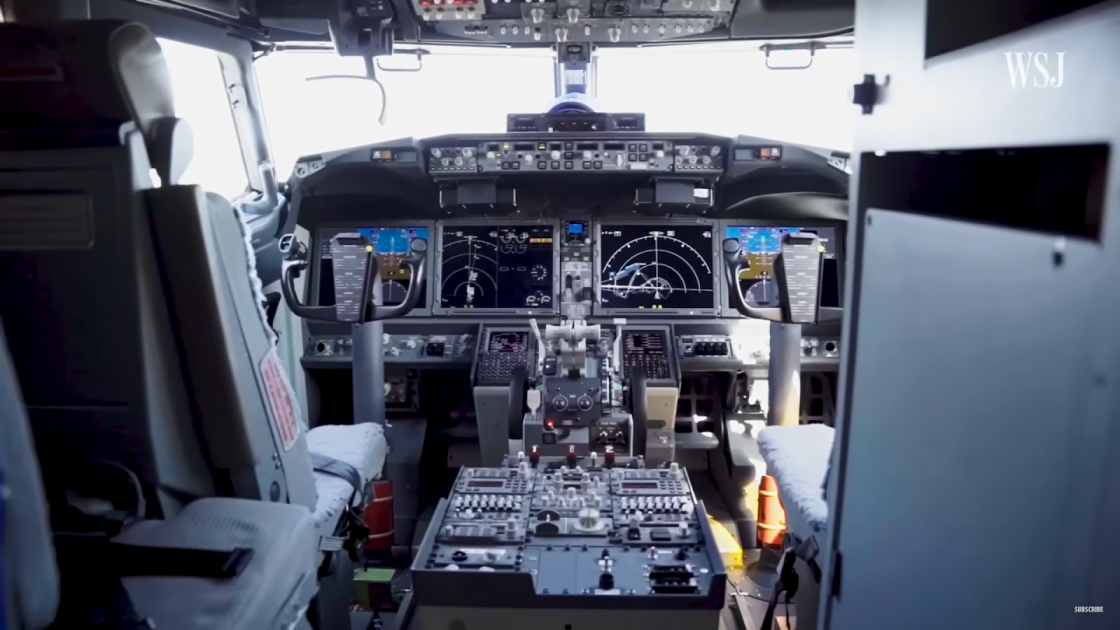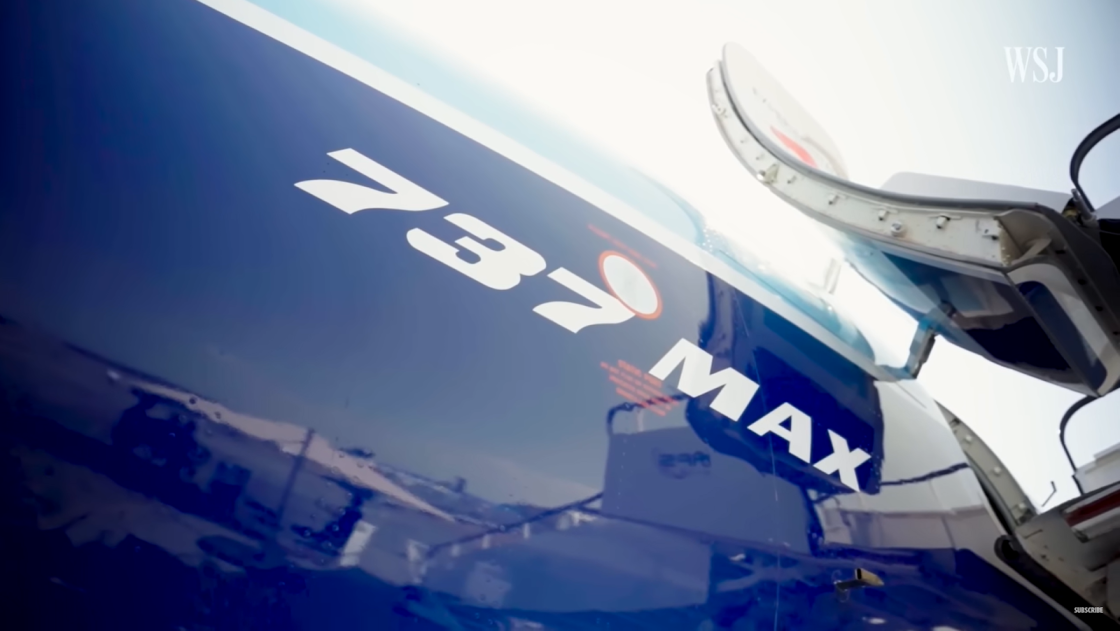The Current Safety Status of the Boeing 737 MAX

The 737 MAX stands as Boeing’s fourth-generation best-selling aircraft, offering lower fuel consumption and increased seating capacity with its upgraded engines and other enhancements.
However, the journey for the Boeing 737 MAX has not been without challenges. A series of tragic crashes caused by a flawed software system led to a 20-month grounding of all MAX aircraft while Boeing and the FAA collaborated on finding solutions.
Presently, the 737 MAX has returned to the skies, with Boeing implementing numerous improvements and safety measures to ensure its airworthiness.
Given the history of the 737 MAX scandal and Boeing’s involvement, it’s natural to wonder: Is the Boeing 737 MAX safe now?
The Boeing 737 MAX: Features, Challenges, and Safety
The Boeing 737 MAX, belonging to the fourth generation of Boeing’s renowned 737 model series, boasts various versions with distinct lengths, passenger capacities, and ranges. This upgraded model takes over from its predecessor, the third-generation Boeing 737, known as the Next Generation.
Boeing has equipped the 737 MAX with several enhancements to make it more appealing to airlines and improve its competitiveness against Airbus’ A320neo aircraft. Among these improvements, the new CFM LEAP engines stand out, contributing significantly to the aircraft’s improved fuel economy. According to manufacturer CFM, the LEAP engines offer an impressive 16% reduction in fuel consumption – a highly valued feature in an industry where fuel costs account for a substantial portion of airlines’ expenses.
Additionally, the MAX incorporates minor aerodynamic modifications and new winglets, further elevating its performance. The 737 MAX made its maiden flight in 2016.
However, the 737 MAX gained infamy due to two catastrophic crashes involving the aircraft type in 2018 and 2019. These tragic incidents exposed serious safety flaws stemming from Boeing’s plane design, leading to a 20-month grounding of the MAX by aviation authorities. After its reintroduction into service, concerns have arisen, prompting many to question whether the aircraft is now safe.
| Main Characteristics | Is the Boeing 737 MAX Safe Now? |
|---|---|
| Name | Boeing 737 MAX |
| Aircraft Type | Commercial Airliner |
| Generation | Fourth Generation |
| Engine Type | CFM LEAP Engines |
| Passenger Capacity | Varies based on variant |
| Range | Varies based on variant |
| Cruising Speed | Mach 0.79 to Mach 0.82 |
| Grounded Period | 20 Months (after 2018-2019 crashes) |
| Safety Improvements | Extensive modifications and enhancements |
| Pilot Training | Mandatory MCAS-specific simulator training |
| Global Authorities’ Scrutiny | Thoroughly investigated and approved improvements |
| Current Status | Back in service, increasing number of airlines using it |
| Safety Assurance | Considered significantly safer with implemented improvements |

Unraveling the MAX Issues: Boeing’s Struggle with the 737
Boeing encountered a significant challenge in the early 2010s when working on the next-generation 737. The new, larger engines for the aircraft couldn’t fit in the same location under the wings as the previous 737 models due to low ground clearance. This prompted Boeing to move up the engine on the wing to address the space problem.
However, this solution introduced another issue: under certain conditions, the aircraft tended to pitch its nose too high during flight, risking stalling. To counteract this problem, Boeing introduced the MCAS software, designed to automatically take control and lower the aircraft’s nose if needed.
Despite its intention, the MCAS system had serious flaws. Activated by a single sensor’s data, it could respond unnecessarily, leading to potential issues even during normal flight. Moreover, when MCAS intervened, it took full control of the aircraft’s pitch, leaving pilots unable to override its actions with their control columns.
Boeing did not adequately inform pilots about the safety-critical MCAS system, resulting in their lack of awareness regarding its operation and power. Tragically, the 737 MAX suffered two fatal crashes: one in Indonesia in October 2018 and another in Ethiopia less than five months later, claiming a total of 346 lives.
MCAS played a critical role in both accidents, as it responded to faulty sensor data and caused steep dives. Despite the pilots’ efforts to correct and recover the aircraft, they were unable to override the MCAS system.
Following the second crash, all Boeing 737 MAX planes were grounded worldwide, and Boeing faced extensive scrutiny and demands for answers from authorities, airlines, journalists, and the public.
Over a period of 20 months, Boeing and the Federal Aviation Administration (FAA) worked to resolve the aircraft’s issues to enable its safe return to service.
Boeing and FAA’s Measures for the Boeing 737 MAX
In light of the MAX’s history and Boeing’s role in the accidents, concerns persist about the safety of flying on the Boeing 737 MAX, especially now that it has returned to service. To address these concerns, it’s crucial to examine the steps taken by Boeing and the authorities to enhance the aircraft’s safety.
While MCAS remains a part of the Boeing 737 MAX, significant changes have been implemented to reduce risks. MCAS now activates only when two of the aircraft’s Angle of Attack (AoA) sensors agree, minimizing the likelihood of sensor errors triggering MCAS. Additionally, a cockpit warning alerts pilots if the two AoA sensors provide conflicting information, signaling a potential sensor failure.
Boeing has also addressed the issue of repeated MCAS activations. Previously, MCAS intervened multiple times in a row with intervals of about 9 seconds, followed by a five-second pause. This possibility of repeated activations has been eliminated.
- To ensure pilot proficiency, all pilots must now undergo MCAS-specific simulator training before operating the Boeing 737 MAX. In the past, this training was not mandated as the FAA accepted Boeing’s assertion that the MAX flew similarly enough to previous 737 models, rendering additional training unnecessary;
- Furthermore, the MAX’s Flight Manual now includes new procedures to aid pilots in identifying and resolving problems related to AoA sensor errors and erroneous horizontal stabilizer movements;
- As part of the grounding’s conclusion, the FAA required airlines to conduct a series of tests on the AoA sensor systems and conduct readiness flights with each grounded 737 MAX aircraft to confirm their preparedness for resuming service.
By implementing these measures, Boeing and the FAA aim to bolster the safety of the Boeing 737 MAX and restore confidence in its airworthiness.
Reassessing the Boeing 737 MAX: Safety and Confidence
The question of whether the Boeing 737 MAX is safe now has been a subject of extensive scrutiny and investigation, with Boeing executives confidently asserting the aircraft’s safety. After the tragic crashes and prolonged grounding, the 737 MAX has undergone unparalleled scrutiny, and Boeing’s modifications have been rigorously tested in both simulators and actual flights, making it one of the safest planes in the world.
Despite its return to service, the Boeing 737 MAX remains under strict monitoring and supervision to ensure continued safety. The extensive scrutiny has come at a high cost for Boeing, with damages and additional expenses amounting to around $20 billion and lost sales estimated at approximately $60 billion. As a result, Boeing is determined to avoid any further tragic scandals.
Pilots who have undergone extensive training for the MAX express complete confidence in the aircraft’s safety. The head of the FAA, Steve Dickson, has also conveyed his full faith in the 737 MAX aircraft. With comprehensive software modifications and proper pilot training, aviation authorities worldwide believe that the implemented improvements serve as a sufficient safety barrier against future accidents.

Conclusion
The two Boeing 737 MAX crashes in 2018 and 2019 triggered a global crisis for Boeing, leading to a 20-month grounding of the aircraft. During this period, Boeing and the FAA diligently addressed critical security issues. Now, the Boeing 737 MAX is back in operation, with an increasing number of airlines choosing to use it.
The pressing question emerges: Is the Boeing 737 MAX now a safe aircraft? One thing is certain: the course of events has not compromised the safety of the Boeing 737 MAX. Through extensive improvements by Boeing and new guidelines from aviation authorities worldwide, the MAX has undergone meticulous scrutiny from every angle. A multitude of massive enhancements have been implemented, significantly enhancing the aircraft’s safety for passengers. Curious to explore the Boeing 737 MAX and the altered engine position up close? Discover this high-quality model for a detailed examination.